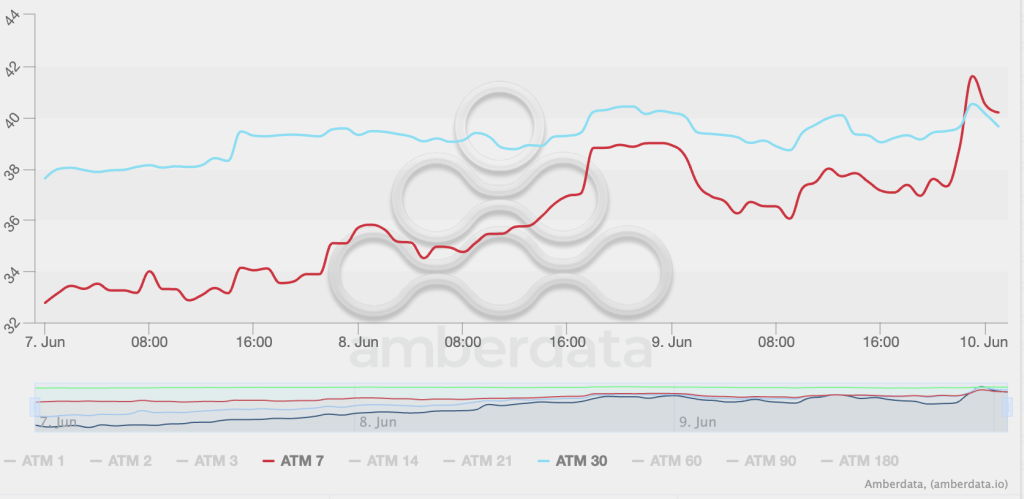The Internal Revenue Service plans to begin slowly paying some of its older claims for the fraud-plagued Employee Retention Credit this summer after coming under pressure from Congress, but it’s not formally lifting its moratorium on processing newer claims as it finds the vast majority of them are improper.
The IRS said Thursday it still plans to deny tens of thousands of improper high-risk claims for the ERC while starting a new round of processing lower-risk claims to help eligible taxpayers. Last September, the IRS
The high-risk group includes other filings with warning signals that seem to clearly fall outside the guidelines already established by Congress. In addition to the highest-risk group, the IRS analysis estimates between an additional 60% and 70% of the claims show an unacceptable level of risk. For this category of claims with risk indicators, the IRS will be doing extra analysis to gather more information with the goal of improving its compliance review and speed up resolution of valid claims while protecting against improper payments.
Andrew Harrer/Bloomberg
“The IRS is deeply concerned about small businesses waiting on their legitimate claims,” said IRS Commissioner Danny Werfel during a press conference Thursday. “They have been victims of the marketing barrage that gummed up processing with questionable claims. For those with legitimate claims, this review helps the IRS with a path forward, and we’re taking action to help. Our review showed between 10% and 20% of the ERC claims show a low risk of red flags. So for those with no eligibility warning signs, and received before last September, the IRS will begin judiciously processing more of these claims. The IRS can anticipate the first payments in this low-risk group will go out this summer. Of note, some of these low-risk claims will begin to be paid later this summer following the final review. This additional review is needed because the submissions may have calculation errors made during the complex filings. For those claims with calculation errors, the amount will be adjusted before payment. The IRS also noted that generally the oldest claims will be worked first. In addition, we remain in the same stance where no claims will be processed if they were submitted after Sept. 14, 2023 when the moratorium was established.”
Advice for taxpayers
He offered advice for taxpayers with claims waiting to hear from the IRS. “Taxpayers with claims do not need to take any action at this point, and they should await further notification from the IRS,” said Werfel. “We emphasize those with ERC claims should not call the IRS toll-free lines or their tax professional. Additional information is generally not available on claims as our processing work continues. However,
The IRS cautioned taxpayers who file ERC claims that the process will take time.
“We deeply appreciate your patience, but there is too much risk for us to return processing speeds to levels that occurred during and just after the height of the pandemic,” said Werfel. “These complex claims take time, and we remain deeply concerned about how many taxpayers have been misled and deluded by promoters into thinking they’re eligible for a big payday. People may think they are on safe ground and have no red flags. But many, many of these claims are simply not eligible under the law, no matter what the promoters may have said. During this period, we continue to urge those with pending claims to review the
Tax professionals have been concerned about the delays. “We have clients who are still waiting for their money or waiting to be contacted or just waiting, and taxpayers are really irritated,” said Rochelle Hodes, a principal in the Washington National Tax Office at Crowe, a Top 25 Firm based in Chicago. “You’ve got them all over the spectrum. Everybody’s just waiting. It’s not fair.”
Moratorium update
He offered an update on the moratorium. “Today we’re announcing the continuation of the moratorium on processing new claims submitted after Sept. 14, 2023,” said Werfel. “We decided to keep the post-September moratorium in place because we continue to be deeply concerned about the substantial number of claims coming in so long after the pandemic. We worry that ending the moratorium might trigger a renewed marketing push by aggressive promoters that could lead to a new round of improper claims. That would be a bad result to taxpayers and tax administration. By continuing the moratorium, we will use this time to consult with Congress and seek additional help from them on the ERC program. Based on what we are seeing, we believe closing the ERC program down to additional applicants would be the right thing to do.”
He noted that even after the moratorium was put in place, new claims have continued to come into the IRS. “We’re continuing to see them roll in at a rate of more than 17,000 a week,” said Werfel. “Our inventory of ERC claims now sits at 1.4 million. These continuing claims are clogging the processing system and harming small businesses with legitimate claims. So we are renewing our calls to Congress to give us help given the problems we’ve confirmed. We need to close down new ERC applications. Currently the law says businesses can typically borrow these claims for the credit until April 15, 2025. That’s a long time from the height of the pandemic.”
In January, the House passed legislation to close down the ERC program to pay for the extension of tax breaks like faster write-offs of research and development expenses,100% bonus depreciation and an expanded Child Tax Credit, but the
In the meantime, the IRS is seeking an extension of the statute of limitations to allow the agency more time to pursue improper claims through its compliance process.
“We will consult Congress more on potential legislative action before making a decision on the future of the moratorium,” said Werfel.
ERC withdrawal process
He also announced that the compliance efforts around erroneous ERC claims now top more than $2 billion since last fall. “This is nearly double the amount announced in March following completion of the special ERC voluntary disclosure program,” said Werfel.
The program saw disclosures of $1.09 billion from over 2,600 applications. The IRS is currently considering reopening the voluntary disclosure program, but at a reduced rate from the original version, he noted.
“If we reopen, it could help those with previously processed claims avoid future compliance action by the IRS,” said Werfel. “We anticipate we will have more information on that in the weeks ahead. For those with pending claims that haven’t been processed, we remind them that the IRS claim withdrawal process remains available. With more than 1.4 million unprocessed ERC claims, the claim or withdrawal process remains an important option for businesses who may have submitted an improper claim.”
So far, the IRS has seen more than 4,800 entities withdraw $531 million in claims through the process. “Our compliance efforts are also showing results in other areas,” said Werfel. “The IRS has determined that more than 12,000 entities filed over 22,000 claims that were improper. This was $572 million in assessments. This initial round of letters covered tax year 2020. Thousands more of these letters are planned in the coming months to address tax year 2021, which involved larger claims.”
Criminal investigations
The IRS Criminal Investigation unit has also been pursuing fraudulent claims for the ERC. “We remain quite active in ERC compliance in other areas,” said Werfel. “Our Criminal Investigation area has initiated 450 criminal cases through this spring, with potentially fraudulent claims worth nearly $7 billion. In all, 36 investigations have resulted in federal charges so far. Separately, the IRS has thousands of ERC claims currently under audit, and we continue to gather information about suspected abusive tax promoters and preparers. The IRS’s Office of Promoter Investigations has received hundreds of referrals from internal and external sources. We have a lot going on with our ERC compliance work and more will continue. So the bottom line for us on ERC is that we’re continuing to work on many different angles. And today’s announcement illustrates that we have a slow but steady path forward to help small businesses with no red flags on their claims, while denying clearly incorrect claims to continuing your work on those claims with question marks.”
Pressure from Congress and lawsuits
Accounting Today asked Werfel if the announcement on resuming ERC claims processing came in response to the pressure the IRS has come under from members of Congress after it
“The ERC can be claimed on an original employment tax return or on an amended return,” O’Donnell wrote in the declaration last week. “Amended returns are filed on paper and are scanned into an aged Correspondence Image Inventory (CII) system. CII does not have any capability to analyze these claims or separate amended returns claiming ERC from amended returns claiming other adjustments. An IRS employee must manually review each amended return to determine whether it includes an ERC claim, and must mark it with special coding to indicate that it is an ERC claim.”
Werfel denied that Thursday’s announcement is tied to those complaints and lawsuits.
“I’ll bring you back to the summer of 2023,” Werfel responded. “That’s when we started to hear concerns across a variety of different stakeholders, including Congress, around the risk of fraud and improper payments increasing in the inventory that was coming in around the summer of 2023. We issued a moratorium so that we could both better assess the nature and the extent of improper payments in the inventory, and to protect the government’s bottom line from paying out claims that might be erroneous. But we also committed at that time to do what we could to find the eligible claims that were in our inventory. As we stated at the time, we knew it would be challenging because of the number of claims we were receiving and the number of risk factors that were in those claims. So we’ve always been motivated, even from the start of the moratorium, to process the eligible claims if we could find them. We just had to be very diligent and cautious, given the number of risk factors in the overall inventory.”
He noted that he has engaged with Congress about the processing of ERC claims. “We’ve been very communicative with Congress about our process and have worked to find claims that were eligible, over $2 billion worth, and to process those while we were going through the review,” said Werfel. “Now, we are ready to increase the number of eligible claims that have been processed previously because our review is done. And that’s what will occur during the summer. And so we should see an increase in the eligible claims that were processed. But that was always a part of our strategy. From the moment we issued the moratorium, our hope and our expectation was that we could get a better handle on the inventory, be more effective and efficient in finding eligible claims, and once we did that, we would scale the number of eligible claims to be issued. That’s what’s happening today.”
However, the IRS doesn’t want to be sending payments to fraudsters. “At the same time, the original hypothesis that led to the moratorium that there were significant improper payments in the inventory has also borne out,” said Werfel. “And so we will also, per plan, be able to increase the efficiency and the effectiveness of our denials of the ineligible claims. So all of that is, I think, not in response to any recent communication, but all part of an ongoing process, where we’ve worked with a variety of different stakeholders, tax professionals and members of Congress to keep everyone up to speed on the process. And I know that myself and others at the IRS remain deeply concerned about the eligible taxpayers that have been harmed by these relentless marketing campaigns. It is the size of the inventory, and then the high number of ineligible claims, that has made it more difficult for us to find and process those eligible claims, but we are working as hard as we can to clean up the inventory, separate eligible from ineligible and make sure we get the eligible ones out.”
Credit: Source link











